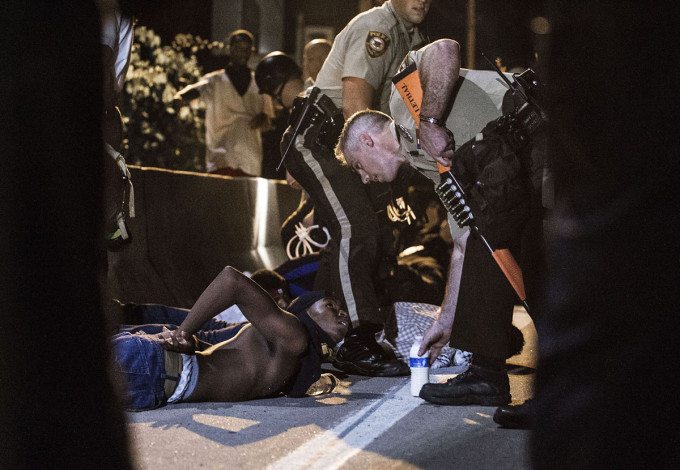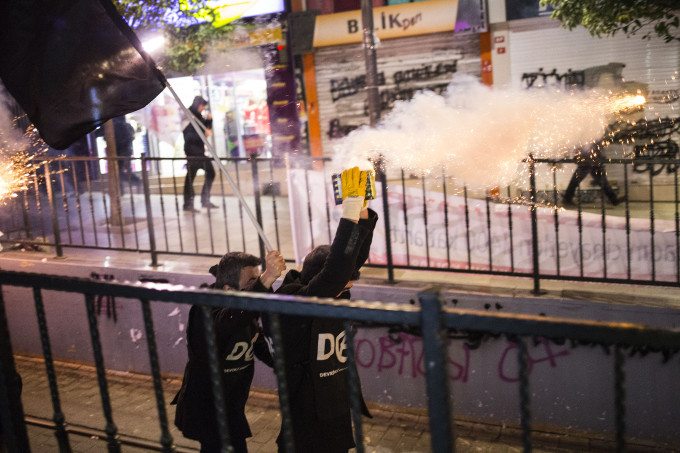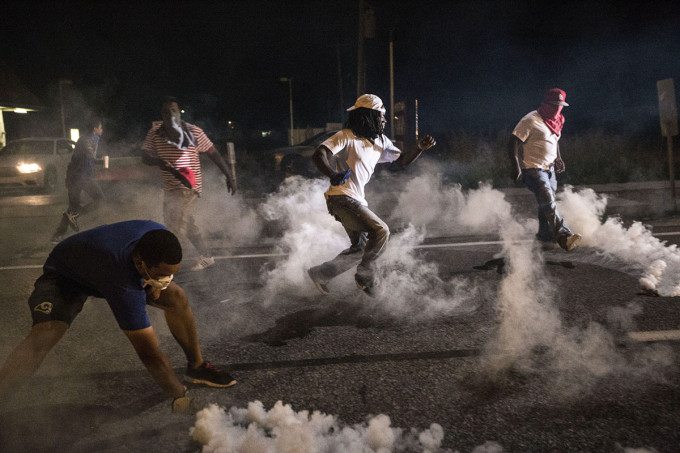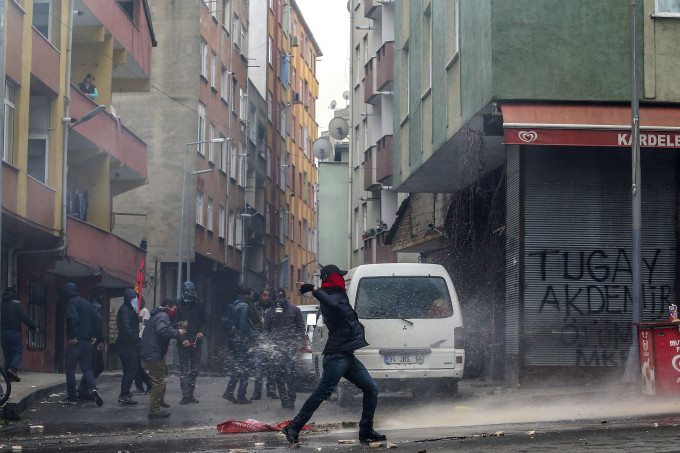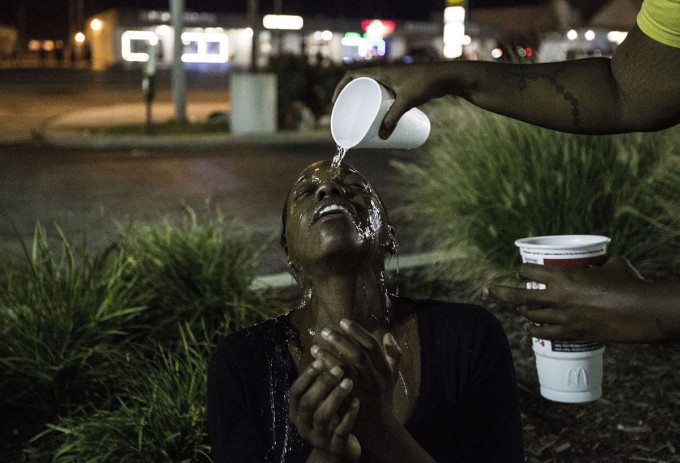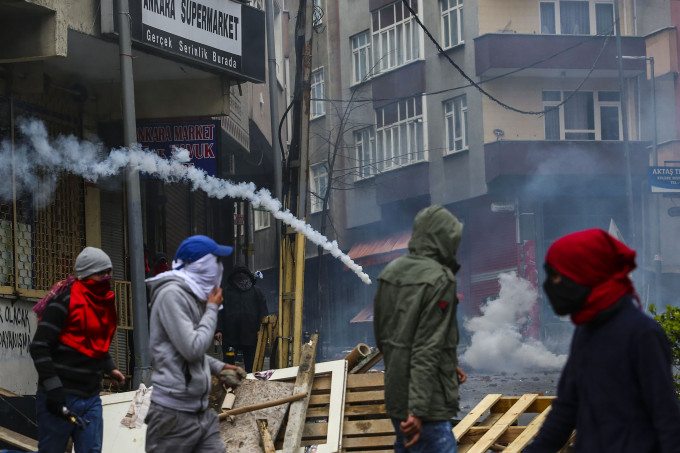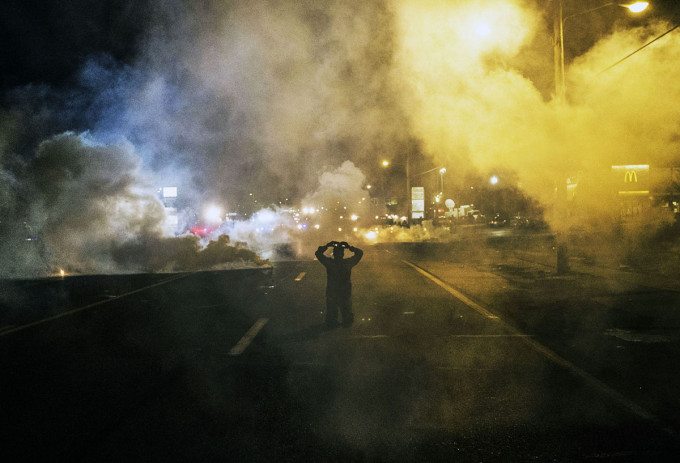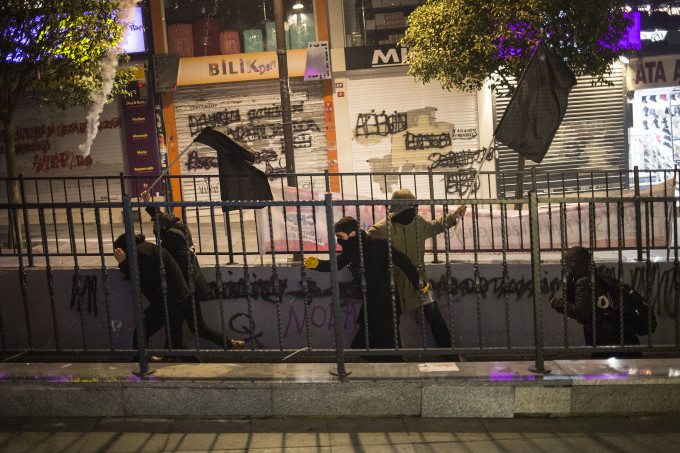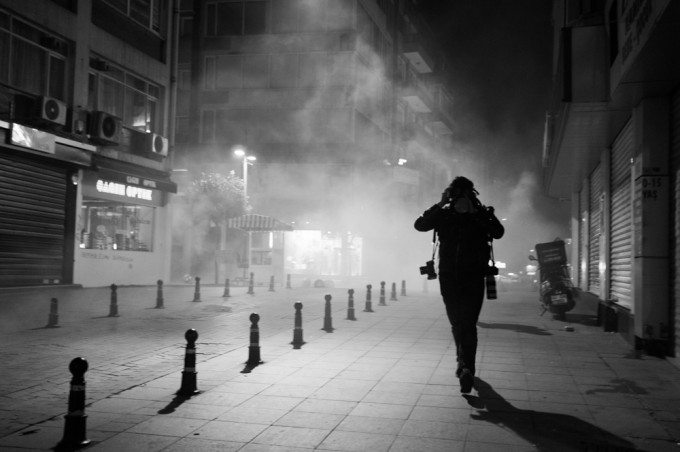
All images used with permission by Alex Wroblewski. Lead image by the author.
The crowd gathered at the intersection with their flags raised. The main road led down to the center of town marked by a bull statue where police vans and water cannons were stationed quietly, waiting for the slightest indication to act. It was the one-year anniversary of the death of Berkin Elvan, a young boy in Turkey who fell into a long a coma ten months earlier after a tear gas canister struck his head. His visage has become one of the symbols of collective unrest in Istanbul since the Gezi Park protests two years ago. Alex Wroblewski and I were standing with our cameras ready about 100 feet from the crowd. We were about to leave when several protesters, some in Guy Fawkes mask and others in black scarves, broke off from the main group and marched down the main road towards the police.
Wroblewski signaled to me that something was definitely going to happen. I nodded quickly, taking notice of the wrapped packages some of them held. Several photographers ran ahead of them to get oncoming shots. The protesters launched several short-range firecrackers at the police before sprinting backwards. They were the types that jettisoned smaller streams of light, their explosions startling passersby and causing store owners to lock their front doors.
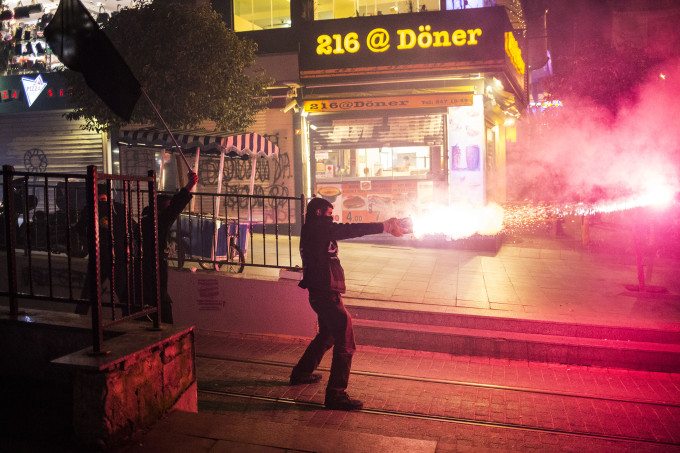
Then came the tear gas. The first canister sent everyone running up the road away from the police and the expanding cloud. I ducked around the nearest corner, as faint wisps of tear gas clouded my eyes and stung my throat. Others came sprinting out of the cloud, their faces exposed to the elements. Wroblewski walked out of the cloud, a Canon 6D hanging off each shoulder, and held his gas mask to his face because, as I would soon learn, one of the straps broke.
“The police here fire tear gas straight at you. They don’t lob them like they do in Ferguson,” Wroblewski told me as we tried to gauge where the protesters would go and if they would engage the police again.
Earlier that day, Wroblewski was one of a handful of photographers in Berkin Elvan’s home town of Okmeydanı. The residents there directed all of their vitriol at the police whose actions a year and a half ago led to the death of one of their own. The scene was tense. Protesters used a mix of guns, rocks, and firecrackers. The police responded in kind with tear gas and water cannons.
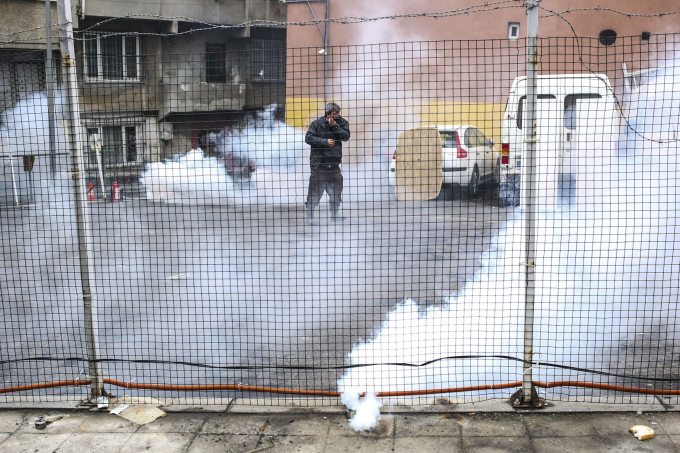
The protesters there seemed to dislike the media almost as much as the police. Wroblewski stayed close to some local photographers who spoke Turkish, one of whom petitioned the protesters to allow him to take pictures. He took a handful of pictures before splitting because the police moved in after clearing the crowds with tear gas and water cannons. A tear gas canister whizzed past his head, a clear sign that the dynamic in Istanbul between protesters and police is different than the dynamic in Ferguson.
Wroblewski came to Istanbul from Milwaukee by way of, Los Angeles, San Francisco, and Chicago. He moved to Los Angeles after high school to skateboard, and soon after took up photography, with most of his efforts focused on photographing skateboarders. Photography quickly became his thing, and it took him to Chicago where he started freelancing, eventually landing the homicide beat, which proved to be a formative experience.
“I’m interested in covering human rights stories,” he said, which started with homicide and grew to include the unrest in Ferguson. Wroblewski made two trips to Ferguson, one in August after Michael Brown was shot and the other when the verdict was announced. The tenor between the two trips was vastly different.
“In some ways it was kind of celebratory,” Wroblewski said of his first time there. Despite the anger and unrest, people were coming together for a cause. At least, that’s the way it felt. The second time, however, tensions were severely heightened. The District Attorney delayed in announcing the verdict until the evening, and when it finally was announced, the city erupted. He narrowly escaped injury as he photographed the riots that ravaged Ferguson.
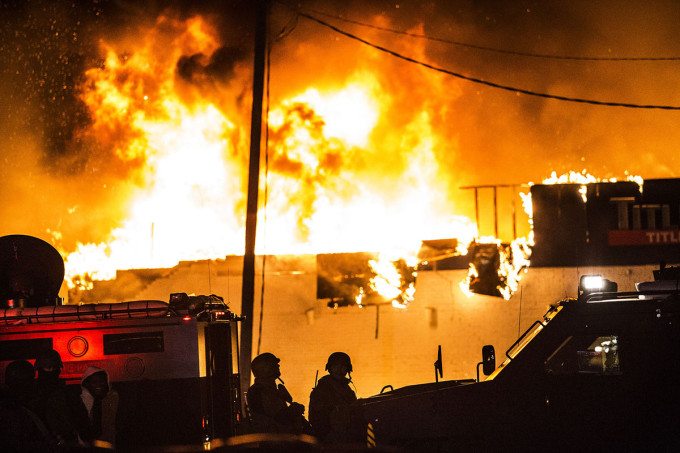
His travels brought him to Istanbul, where he’s doing a semester abroad as part of his coursework for Columbia College in Chicago, though it’s the protests that keep him vitalized. The chance to tell a part of the story is one that he jumps at. Having photographed several protests in the past month with him, I can say that he has a deep understanding of how to move in a protest, and it helps that he isn’t very excitable. A calm demeanor is absolutely essential in those situations, particularly when there’s a language barrier.
“Communication is the hardest thing,” Wroblewski said of the fact that he doesn’t speak Turkish. It can be terribly disconcerting when the police have a penchant for wanton use of batons, tear gas, and water cannons.
Yet, he carries on, moving from protest to protest with ease. He has his eye on the Middle East. He counts Warzer Jaff, Tyler Hicks, Bryan Denton and others among the photographers whose work most influences him. Where he’ll be based and what he’ll be covering after the semester’s up is anyone’s guess, but the desire to tell a good story is there as well as the experience of having worked in some of the most difficult situations stateside.
For now, he’s chasing protests.
